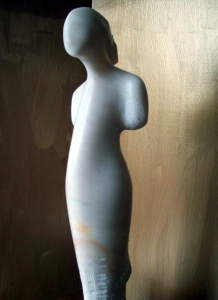Nonlinear Method of Calculating Autonomic Balance or HRV
Kristen Sparrow • November 05, 2016


This paper out of Howard University explores a more sensitive way of measuring LF/HF or sympathetic/parasympathetic activity in healthy volunteers. I would have to get more details on how to actually do this. But interesting as a reference. And fascinating that they want to use this evaluation method in conjunction with acupuncture. More like this please!
Nonlinear Conte-Zbilut-Federici (CZF) Method of Computing LF/HF Ratio: A More Reliable Index of Changes in Heart Rate Variability.
Author information
- 1Department of Recreation, Human Performance & Leisure Studies, and Exercise Science & Human Nutrition Laboratory, Howard University Cancer Center, Washington D.C., United States of America.
- 2Division of Cardiology, Department of Medicine, Howard University College of Medicine & Howard University Hospital, Washington D.C., United States America.
- 3Department of Pharmaceutical Sciences, College of Pharmacy, Howard University, Washington D.C., United States of America.
- 4Departments of Pharmacology, American University of Antigua College of Medicine and Manipal University, St. John’s, Antigua and Barbuda.
- 5Behavioral Science & Neuroscience, American University of Antigua College of Medicine, St. John’s, Antigua and Barbuda.
- 6Medical Physiology, American University of Antigua College of Medicine, St. John’s, Antigua and Barbuda.
Abstract
OBJECTIVES:
Acupuncture treatments are safe and effective for a wide variety of diseases involving autonomic dysregulation. Heart rate variability (HRV) is a noninvasive method for assessing sympathovagal balance. The low frequency/high frequency (LF/HF) spectral power ratio is an index of sympathovagal influence on heart rate and of cardiovascular health. This study tests the hypothesis that from rest to 30% to 50% of peak oxygen consumption, the nonlinear Conte-Zbilut-Federici (CZF) method of computing the LF/HF ratio is a more reliable index of changes in the HRV than linear methods are.
METHODS:
The subjects of this study were 10 healthy young adults. Electrocardiogram RR intervals were measured during 6-minute periods of rest and aerobic exercise on a cycle ergometer at 30% and 50% of peak oxygen consumption (VO2peak).
RESULTS:
The frequency domain CZF computations of the LF/HF ratio and the time domain computations of the standard deviation of normal-to-normal intervals (SDNN) decreased sequentially from rest to 30% VO2peak (P < 0.001) to 50% VO2peak (P < 0.05). The SDNN and the CZF computations of the LF/HF ratio were positively correlated (Pearson’s r = 0.75, P < 0.001). fast Fourier transform (FFT), autoregressive (AR) and Lomb periodogram computations of the LF/HF ratio increased only from rest to 50% VO2peak.
CONCLUSION:
Computations of the LF/HF ratio by using the nonlinear CZF method appear to be more sensitive to changes in physical activity than computations of the LF/HF ratio by using linear methods. Future studies should determine whether the CZF computation of the LF/HF ratio improves evaluations of pharmacopuncture and other treatment modalities.
KEYWORDS:
autonomic modulation; autoregressive; exercise; fast Fourier transform; heart rate variability; acupuncture

